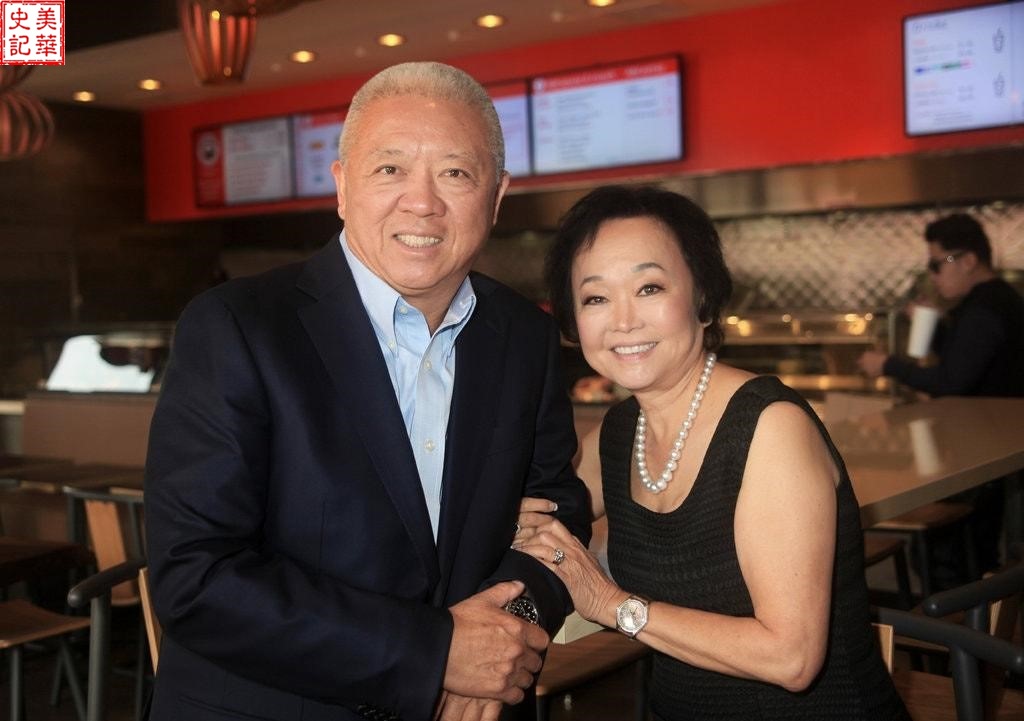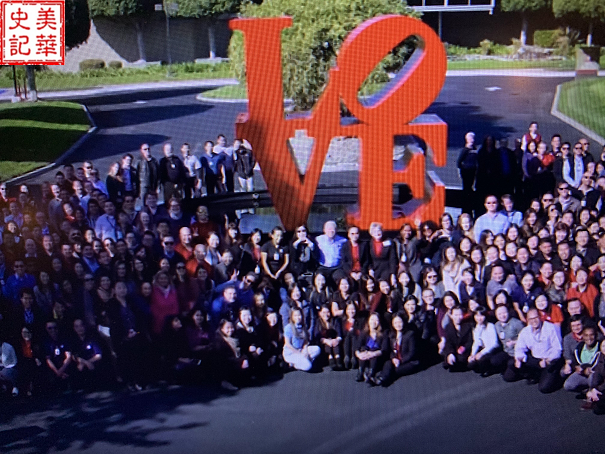Author:Fan Jiao (焦凡)
Editor: Michelle X. Li
ABSTRACT
Andrew (Zhèngchāng) Cherng (程正昌) is one of Forbes‘ Twenty-Five Notable Chinese-Americans [1] and a member of the Committee of 100 [2]. He was born in Yangzhou, China, and grew up in Taiwan and Japan. In 1966, at the age of 18, Andrew Cherng came to the United States to study mathematics at Baker University in Kansas. There, he met his future wife, Peggy, who was also an international student. In 1973 Andrew Cherng and his father, a Chinese chef, opened the Panda Inn, a sit-down Chinese restaurant in Pasadena, California. Ten years later, Andrew Cherng opened the first Panda Express, a Chinese fast-food restaurant, which has expanded to more than 2,200 locations in the United States, Canada, Mexico, South Korea, and other countries, employing nearly 40,000 people while remaining family-owned and operated. As co-chair and co-CEO of the Panda Restaurant Group, Cherng has amassed a net worth valued at $3.5 billion according to Forbes. Since 1999, Panda Cares, the restaurant group’s philanthropic arm, has donated more than $140 million to provide healthcare services to uninsured children, improve college readiness in schools, deliver immediate relief to victims of the California wildfires, and more.
Early Days
Andrew Cherng was born in April 1948 in Yangzhou, Jiangsu Province, China. His father was a Cantonese cook. When the National Government withdrew after losing the Chinese mainland, his family moved to Taiwan. In 1963, his family moved to Yokohama, Japan, where his father continued to work as a cook.
In 1970, Andrew, 20, received a bachelor’s degree in mathematics after two years at Baker University in Baldwin, Kansas, then a master’s degree in Applied Mathematics from the University of Missouri in 1972.
In graduate school, he met his future wife Peggy Tsiang, who was born in Burma and grew up in Hong Kong. Peggy received her Bachelor of Applied Mathematics degree from Oregon State University in 1971 and her Ph.D. in Electrical Engineering from the University of Missouri in 1974. From 1975 to 1977, Peggy was a lead engineer at McDonnell Douglas and developed the U.S. Air Force Battlefield Simulator. From 1977 to 1982, she was a technical leader and software manager at 3M subsidiary Comtal Corporation.


Dream Coming True
During his college years, Andrew worked in a New York restaurant every summer, cleaning tables and washing dishes. Although his father had been a cook, he always worked for others and never had his own business. On the other hand, Andrew always dreamed of opening his own restaurant.
In 1973, Andrew and Peggy used all their savings of $60,000, plus a loan from the Small Business Administration, to open their first Panda Inn in Los Angeles. In the beginning, their restaurant focused primarily on Cantonese cuisine, which was very competitive because there were so many Cantonese restaurants in the area. Although he worked very hard, twelve or thirteen hours a day, there were still not enough customers and the restaurant was struggling to stay afloat. Later, he took advice from customers and added some new dishes from Chinese Hunan and Beijing cuisines, which gave the restaurant some special features and business began to improve.
Peggy and Andrew married in 1975. Since 1982, she has been the operations manager of Panda Restaurant, using her knowledge to build a store computer management system. She collected information from the dishes ordered by guests, promoting procurement automation and menu diversification.
In 1983, Peggy and Andrew set up the first Panda Express restaurant. Until then, most Chinese restaurants in Southern California offered only a fragmented, single menu of Cantonese cuisine, and there was no chained restaurant model. With more and more Chinese immigrants, including many from mainland China, coming to the U.S., the influx of Chinese cooking skills enriched the Chinese food menu and increased the popularity of Chinese restaurants. Panda Express restaurants serve traditional Chinese food with a fast-food menu, attracting a diversified customer base through a fast-food service style.




The Opportunity
One day in 1983, Cherng met Terry Donahue, UCLA’s head football coach, and his brother Dan, a developer of the Glendale Galleria mall. After they enjoyed the food, they invited Cherng to open a Panda Express restaurant in Glendale Galleria, which is a large three-story regional shopping center and office complex located in downtown Glendale, CA.
In October of the same year, the first Panda Express opened successfully in the mall. Soon, the Panda Express grew from five stores to nine in a year, and by 1985 the shoppers of the malls had become their main customers.
Andrew found that the location of the restaurant had a lot to do with attracting customers and directly affected the outcome of the business. Before purchasing a site from a new restaurant, he always carried out a thorough investigation and research to ensure that his new restaurant would generate reasonable profit, with respect to the store market and discount prices. He usually preferred the location of his new restaurant at the corner of a mall, with smooth traffic during the day and good traffic in the evening, so that customers are willing to go in.
Most of the Panda Express restaurants in shopping malls are owned by his company. They would open new restaurants in institutions such as universities, as well. They would find suitable operators/franchisers for them to apply for operating licenses, and who would help them set up restaurants to start business. The company would provide quality control supervision and training to the franchisers, and would give the Panda Express owners freedom to run their business independently, which greatly accelerated the growth momentum of franchisers.
By 1997, Panda Express had established a supply chain system that distributed food materials to stores through third-party vendors. By 1990, they had 254 stores with revenues of $178.7 million, and they set a new corporate revenue target of $1 billion by the end of the 20th century.
Expand Vigorously
In the 1990s, Panda Express expanded from being located in shopping malls to city streets and some highway entrances, allowing the company to grow rapidly.
To capture the market potential of Japanese food, Panda Express opened Hibachi-San in 1992.
With the continuous development of business, many Panda Express restaurants were opened in universities, airports and foreign countries. This development model makes business licenses particularly important, and Panda Express had been strengthening its close links with local/global security departments in schools and airports, in order to ensure the safety of employees and real estate.
In 2010, Panda Express achieved its own goal of $1.069 billion in sales.
The Value of Life
Because both Andrew and Peggy are immigrants, Panda Express has had an “All-In” mentality since the start.
In order to run a good business, the couple has been very frugal and are willing to do anything if it makes good business sense. From 1983 to 2000, Panda Express developed a support program for opening new stores. They would send an experienced team to the new locations and help open the new stores. Instead of staying in a hotel, the support team would live in an apartment with the new local team for a month to promote healthy team building.
Panda Express is a family-owned company that advocates promotion within the company. Andrew and Peggy’s eldest daughter is the company’s chief marketing officer, their second daughter manages investments for the Cherng Family Trust, and the youngest daughter is in charge of the Panda Charitable Foundation. Over the years, Andrew and Peggy are most proud to see their employees and business continue to grow; some employees who joined Panda Express as kitchen cooks and waitresses are now vice presidents or key managers of the company.
Beauty of Human Nature
In 2018, the artist Robert Indiana’s “LOVE” sculpture was installed at the entrance to the headquarters of the Panda Restaurant Group in Rosemead, California. The 12-foot-tall, multimillion-dollar art treasure came from private donations from the Cherngs, with the four bright red letters “L, O, V, E” in aluminum above the fountain, a symbol of love’s spring water gushing out. The couple chose the sculpture because the message of “LOVE” resonated with both of them.
Over the past 46 years, they have built a vast empire of Chinese restaurants, introduced different flavors of novel cuisines for different customers, gained social recognition, and achieved the economic benefits they deserve. They attribute their success to the dedication of many employees, thus they treat their employees very well. They also often give back to the community, including a donation of $140 million to underprivileged children and people suffering from California wildfires. Those are just a few examples of social responsibilities promoted by Panda Cares, a charity owned by the food and beverage group.
The Panda Express restaurant empire had sales of more than $3 billion in 2017, with more than 2,000 Panda Express restaurants in the United States, Canada, Mexico, Japan, South Korea, Saudi Arabia, the United Arab Emirates, Guatemala and Aruba. The restaurants receive an average of about 480 guests a day per each location, and employ around 40,000 people.




References:
1, Twenty-Five Notable Chinese-Americans. https://www.forbes.com/global/2008/0915/054a.html#35098cad59f8
2, Committee of 100. https://en.wikipedia.org/wiki/Committee_of_100_(United_States)
3, Trailblazers | Panda Express | Asian Pacific American Heritage Month https://www.youtube.com/watch?v=45VVIY8Wnwk
4, How did she get there? https://www.bloomberg.com/features/2016-how-did-i-get-here/peggy-cherng.html
5, How Panda Express brings Chinese food to the mall. https://fortune.com/2013/02/05/how-panda-express-brings-chinese-food-to-the-mall/?iid=sr-link1
6, For Panda Express Owners, It’s About Family. https://www.nytimes.com/2018/03/22/business/panda-express-owners.html
7, The spirit of giving at PANDA. https://www.pandacares.org/